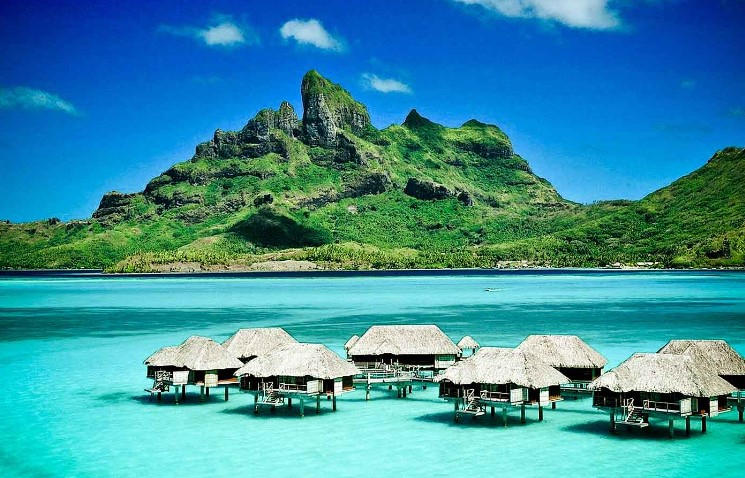Hurtigruten’s MS Fridtjof Nansen near Petermann Island in the Weddell Sea off the coast of … [+]
When it comes to expedition cruising, the Hurtigruten’s MS Fridtjof Nansen is built for adventure. It carries passengers through some of the most treacherous seas on earth between Ushuaia on the southern tip of Argentina and the Northwestern coast of Antarctica.
But the Fridtjof Nansen isn’t your typical cruise ship. It’s a 500-passenger, hybrid electric-diesel vessel capable of launching a fleet of 12-passenger Zodiacs into the frigid Antarctic waters. Oh, and it can also cut through a meter of solid ice for those difficult-to-reach places.
Welcome to the world of expedition cruising, one of the fastest-growing segments of the cruise industry.
“Expedition cruises are often the last bastion of novelty for wealthier travelers,” says Jeff Galak, an associate professor of marketing at Carnegie Mellon University’s Tepper School of Business. “Most have been to major cities around the world and have visited the obvious natural wonders one can see. But few have the fortune of having been to, say, Antarctica or the Galapagos. Those expeditions are the culmination of a life of travel for many already well-traveled individuals.”
A lone chinstrap penguin near Brabant Island, one of the larger islands of the Palmer Archipelago in … [+]
Expedition cruising is a hot trend in 2023
Expedition cruising may also one of this year’s hottest travel trends. After the staycation (2020), the great outdoors vacation (2021) and the domestic vacation (2022), Americans are looking for something more exotic for their 2023 getaways, according to multiple surveys. Expedition cruising checks all of those boxes.
“Adventure travel is proving to be the break-out travel trend of the decade,” says Noah Brodsky, chief commercial officer for Lindblad Expeditions. “We’re seeing tremendous excitement from guests across geographies and generations to get that bucket-list trip on the books today.”
The small ships ply waters that no other vessel can, including the Amazon, Galapagos and coastal Indonesia. They offer white-glove, personalized service that’s rare on a conventional cruise — spacious suites, gourmet meals and included shore excursions. But they are pricey, with many cruises costing more than five figures per passenger.
“Expedition cruising provides an immersive adventure through nature and history that is literally in the footsteps of the world’s most renowned explorers,” says Pam Young, an executive vice president at Internova Travel Group and a cruise specialist. “These vessels turn your vacation into a true adventure.”
So what’s the appeal of an expedition cruise? How is an expedition cruise different from a small-ship cruise, riverboat cruise, or ocean cruise? And what do you need to know about this travel trend as you plan your 2023 vacations?
Boarding a Zodiac on the MS Fridtjof Nansen to visit the Antarctic.
What’s an expedition cruise?
An expedition cruise is a world away from a traditional ocean cruise, with its all-you-can-eat buffets, cabaret shows and popular ports of call.
“An expedition cruise is different from other cruise vacation offerings as it often takes place in a remote, seldom visited region of the world,” says Ken Muskat, managing director of Scenic Group USA, a tour operator. “This provides an opportunity for learning, taking in views and sights not seen by many, and gaining a better understanding of how the world truly works from a ‘we are just visitors here’ viewpoint.”
They’re more intimate
“Expedition ships, by definition, are small,” explains Stephanie Goldberg-Glazer, owner of Live Well, Travel Often, a boutique travel agency. “They carry between 16 and 250 passengers. A smaller, more intimate ship is very appealing to a lot of people.”
They go to destinations no other cruise ship does
“A smaller vessel provides the opportunity to explore many areas not reachable by larger ships,” says Catherine Heald, CEO of Remote Lands, a tour operator. Remote destinations such as Raja Ampat, Borneo and Papua New Guinea don’t have the traditional luxury hotel infrastructure. But an expedition cruise ship allows passengers to access those places without the need for a traditional hotel.
They’re focused on education and exploration
As the name implies, there’s a learning element to most expedition cruises. “An expedition cruise satisfies your cultural and intellectual curiosity,” says Edward Granville, chief operating officer of Red Savannah, a tour operator. “There is usually a focus on nature, wildlife and off-the-beaten-track experiences in remote areas, and a degree of physical activity is usually to be expected.
Passengers tour the waters near Anvers Island in the Antarctic.
How an expedition cruise is different from a traditional cruise
The differences between an expedition cruise and a regular cruise are apparent the moment you board a vessel like Hurtigruten’s Fridtjof Nansen. Instead of dinner shows, there are onboard lectures on everything from marine life to Antarctic history. There are several mandatory safety briefings on the Antarctic, including evacuation protocols and expedition do’s and don’ts.
A senior crewmember demonstrates how to wear a survival suit, each word sounding like a dire warning: There is no margin for error in a place like the Antarctic. Deviate from these instructions and it will not end well.
By the time the ship leaves the safety of the Beagle Channel and heads into the Drake Passage, one of the most treacherous bodies of water on Earth, it’s clear that this is not a pleasure cruise. The Drake is a rite of passage for Antarctic passengers, where it isn’t uncommon to find 30-foot swells and winds so strong that the ship can’t move forward.
The Fridtjof Nansen has several onboard stabilizers to lessen the effects of the Drake’s giant waves, yet even on a midsummer day with a light wind, the swells keep most of the passengers confined to their cabins. There’s free Dramamine at the hotel reception desk, which reduces the effects of motion sickness and induces sleep. Many passengers spend the better part of two days sleeping, waiting for calmer seas.
But some passengers do venture out of their rooms to eat breakfast at Aune, the main onboard restaurant. In the Drake Passage, you can only take two or three steps and then have to find something to hold onto. Once you find your way to a table, you notice the other passengers are eating quietly. Expedition cruising is intentionally minimalist. There’s no midnight buffet, no onboard entertainment (except for the staff band, The Rolling Waves, which performs on the last evening onboard).
What’s the appeal of an expedition cruise?
So why would anyone subject themselves to 48 hours in one of the most dangerous passages on the planet twice? The answer is right there on the third day aboard the Fridtjof Nansen. That’s when passengers wake up, pull back the curtains, and see the majestic glaciers of the White Continent under a sky so deep blue that it looks almost black. The seas are flat calm, and an ever-present sun burns a hole in the sky. This is something most people only read about in National Geographic, something few humans get to see in person — and now you are here.
The next four days are a whirlwind of activity. Zodiacs and kayaks leave the ship from early morning to late afternoon, touring glaciers, penguin rookeries and abandoned research stations. The physical requirements are considerably higher than those of a conventional cruise. You have to be able to hike up an incline in wet snow, and some of the landings are in water, so you need to be able to swivel on the top of the Zodiac while you’re sitting and jump into shallow water.
Unlike a conventional cruise, where the trophies are souvenirs bought from a gift shop in a Caribbean port of call, the keepsakes here are photos — for example, the close-up shot of gentoo penguins. Or the wide-angle image of you in front of a towering glacier. Or the picture of you and the new friends you made, enjoying time together after a lecture on Antarctic explorers.
What you need to know about expedition cruising
What do you need to know before you book an expedition cruise? Here’s a checklist:
Insurance requirements are much stricter
Most expedition cruise companies require insurance, particularly for medical evacuation. A conventional travel insurance policy might not cover you, say experts. “Keep in mind that many travel insurance plans have Arctic region exclusions, meaning illnesses and injuries occurring north of the Arctic Circle won’t be covered,” says Narendra Khatri, principal of Insubuy, a travel insurance company. “This includes parts of Alaska, Canada, Greenland, Scandinavia, and Russia.” He recommends reading your insurance policy carefully to understand what kind of medical care the cruise line can offer, and what your true cost for treatment could be if you get sick or hurt. It could end up being solely your financial responsibility.
You really need a travel advisor for an expedition cruise
Just like travel insurance is all but required, so is a travel advisor. A professional will ensure you choose the right expedition cruise and will be available during the voyage in case something goes sideways.
“Be sure to thoroughly research your cruise options and consult a specialist advisor or two with regards to when to go and which vessel and itinerary best matches your expectations and aspirations,” says Jeremy Clubb, founder of Rainforest Cruises, specialists in exotic riverboat and small ship cruise packages. “If you are particular about seeing certain species or places, or participating in certain activities, you may only be able to see them or partake of them at certain times of the year, when breeding or migration occurs, or climatic conditions allow.”
Choose your cruise with care
Time and again, experts say you have to conduct extensive research on the best vessel and itinerary. This isn’t like a five-day Eastern Caribbean cruise on a 3,000-passenger ship, where they’re all pretty much the same. Even among expedition cruise companies, there are vast differences, ranging from retrofitted icebreakers to purpose-built, all-suite luxury vessels.
“Are you choosing a company that focuses more on the ship and the onboard experience than they do on the expedition itself?” says Fernando Diez, marketing director for Quasar Expeditions. “I always recommend that people choose an expedition cruising company for the actual expedition experience that they deliver.”
That means paying attention to the guides, the excursions, the activities, the itinerary and the wildlife encounters. The ship is also important, but it’s not the most important thing on an expedition cruise. Diez says once you narrow it down to a list of expedition cruise operators, check the differences between ships to choose the perfect itinerary.
What you need to know before booking an expedition cruise
Before you book an expedition cruise, there are a few things you need to know.
Know your limits
Expedition cruises have lots of boundaries. For example, many cruise lines visit ecologically sensitive areas or places that are only accessible at certain times of the year. It’s important to understand them before you start planning. Jeremiah Daniel, who runs a travel review website, says he was frustrated with part of his Antarctic expedition cruise. “I didn’t like that I couldn’t go land touring,” he says. “We stopped at various places, but our Zodiac boat never went ashore, and I really wanted to get a chance to explore the interior of the continent up close.”
Pack for an expedition
“Be prepared for a more rugged and adventurous trip,” says travel advisor Kristin Winkaffe of Winkaffe Global Travel. “Pack comfortable, durable clothing and gear, and be prepared for potential changes in weather and rough seas.” That last piece of advice is particularly important. If you think you might be susceptible to motion sickness, pack Dramamine or Bonine or get a patch. There’s nothing worse than watching your fellow passengers trying to eat breakfast, clutching a fork in one hand and a motion sickness bag in the other.
Plan ahead
“Book early,” advises Shelley Ewing, president of Tier One Travel. “With the current pent-up demand for travel, it’s a good idea to plan your future trips well in advance so you won’t be disappointed, as inventory is limited. Some cruise lines already have sailings for 2025 available.”
That’s not a typo — she said 2025.
Who should take an expedition cruise?
I’ve sailed on several expedition cruises in Norway and Antarctica in the last year, and one of the most difficult questions for me has been: Who should take an expedition cruise?
Unlike a conventional ocean cruise that caters to the stereotypical “newlywed, overfed and nearly dead,” expedition cruises appeal to a different demographic. I’ve met young families with children, couples and retirees. The one thing they all seem to have in common is their curiosity and love of adventure — and the ability to pay the steep cruise fare.
“Expedition cruises offer eye-opening experiences and a true sense of exploration,” says Hayley Peacock-Gower, chief marketing officer of Aurora Expeditions. “Travelers will meet remote area specialists, historians and scientists, and participate in onboard lectures prior to exploring the destination firsthand to be fully entertained and have their knowledge expanded on what they are about to see.”
People who dare take this adventure are willing — sometimes even eager — to tolerate the hardships of an expedition cruise. In the Fridtjof Nansen’s gift shop you can buy caps and T-shirts that advertise your Drake Passage adventure. The same passengers who held on to the railings for dear life were dismissive about the ordeal the very next day in calmer seas. It was nothing. But it was something significant, being on a small ship in 30-foot mountains of water.
But that is the allure of expedition cruising. The photos of you at the bottom of the world or kayaking in the Galapagos — it’s something few people will ever experience. And now you have bragging rights.




More Stories
Everything You Need To Know About Princess Cruises Longest World Cruise Ever
Best websites to book a cheap cruise
Best Cruise Lines: Top 5 Vacations At Sea Most Recommended By Experts